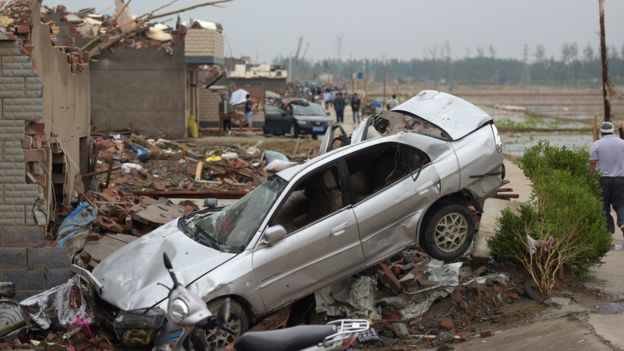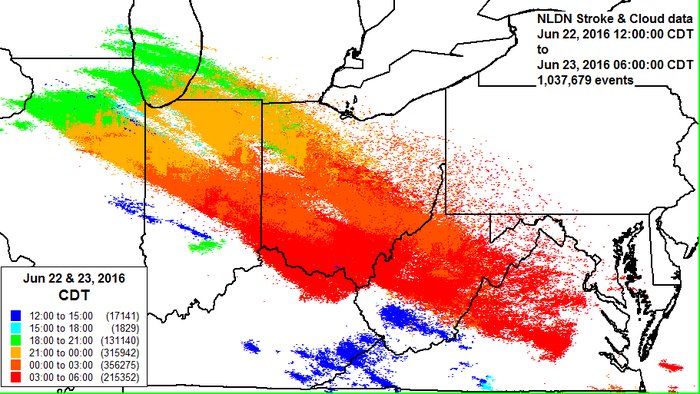
© AFPThe winds were powerful enough to pick up vehicles
A tornado and hailstorm have killed at least 98 people and injured nearly 800 in the east Chinese province of Jiangsu, according to state media.
Accompanied by torrential rain, the tornado struck the outskirts of the city of Yancheng on Thursday afternoon.
Counties on the city's outskirts saw winds of up to 125km/h (78 mph).
The search for survivors in debris has now been completed with a clean-up under way, the head of the provincial fire corps told state media.
President Xi Jinping had ordered "all-out rescue efforts" after what the Xinhua news agency said was one of the worst disasters ever to hit Jiangsu.
It was also the worst tornado to hit China in half a century, it said.
On Friday, rescuers were carrying injured villagers into ambulances and delivering food and water to others, said Xinhua.
Heavy rain and the possibility of more hailstorms and tornadoes had further complicated rescue efforts.
More than 1,300 police officers had been mobilised to help, while tent and other emergency supplies were being sent from Beijing.

Comment: Study: Extreme tornado outbreaks are increasing